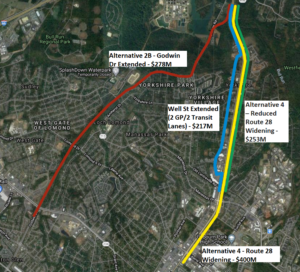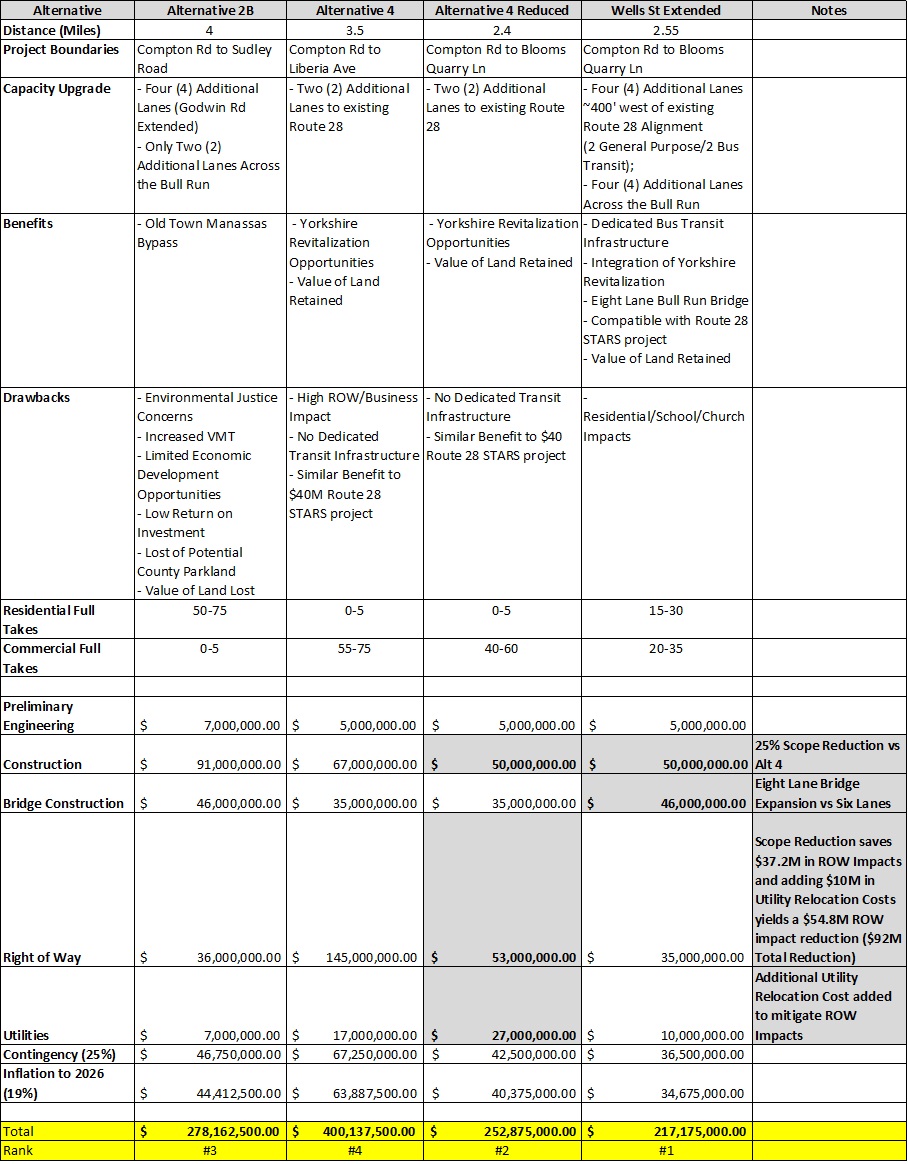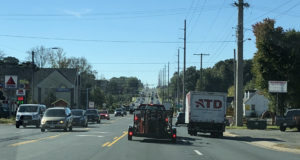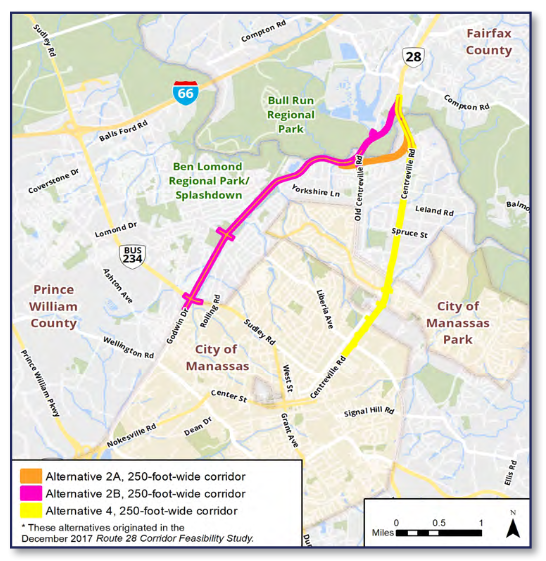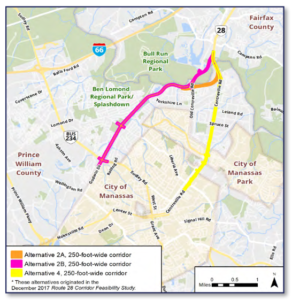
Active Prince William, Prince William Conservation Alliance, Southern Environmental Law Center, Sierra Club – Virginia Chapter, Coalition for Smarter Growth, Piedmont Environmental Council, Joint Land Use Committee of the Sully District Council of Citizens Associations and West Fairfax County Citizens Association
PRESS RELEASE
For immediate release:
October 8, 2020
Contact:
Rick Holt, Active Prince Williiam
Charlie Grymes, Prince William Conservation Alliance
Stewart Schwartz, Coalition for Smarter Growth
John (Jay) W. Johnston, for Joint Land Use Committee
Groups call on Northern Virginia Transportation Authority to defer action on Route 28 project
Calls Route 28 process extremely flawed
The Northern Virginia Transportation Authority (NVTA) is scheduled to approve a project agreement that will advance Alignment 2B for a Route 28 Bypass at their meeting on October 8. “Our coalition of conservation, smart growth, and transportation reform groups is calling on the NVTA to delay action because of the negative environmental, regional travel, and community impacts of the proposed Alignment 2B and because of significant procedural failings that must be addressed,” said Stewart Schwartz, Executive Director of the Coalition for Smarter Growth.
Rick Holt, Chair of Active Prince William noted that “State law, Section 15.2-2232, requires that new roads be consistent with local comprehensive plans, and that local planning commissions make a finding to that effect. However, Alignment 2B of Route 28, which the Prince William Board of Supervisors approved in a controversial 5 to 3 vote, is not in the Comprehensive Plan for either Fairfax County or Prince William County and has not been reviewed and approved by their planning commissions.”
“The entire Route 28 study process has been flawed and frustrated sound alternatives analysis and community input,” said Charlie Grymes, former chair of the Prince William Conservation Alliance.
- The 50+ families who would be displaced from a rare spot of affordable housing were not provided adequate notification and an opportunity to respond.
- The promised federal Environmental Study and Alternatives Analysis (originally proposed as an Environmental Impact Statement) was never completed and was prematurely abandoned, so the pros and cons of the alternatives were never adequately documented, much less presented for public review and comment.
- The critical Purpose and Need Statement for the Route 28 Environmental Study was never disclosed to the public prior to a October 9, 2019 public meeting. Not only was the Purpose and Need Statement never released for public comment, it was evidently never released for review and comment by relevant local, state, or federal agencies.
- No public hearings were ever held for this project prior to the July 14, 2020 public hearing before the Prince William Board of County Supervisors to proceed with the preliminary engineering for Alignment 2B.
- None of the written reports for the Route 28 Environmental Study, including the Traffic Technical Report, were posted for public review prior to July 7, 2020, only one week prior to the July 14, 2020 public hearing. These reports and their findings were never discussed at any prior public meetings for this project.
- Despite the Fairfax County location of “Option 2B,” the Fairfax County Board of Supervisors has held no public hearing on either amending the adopted Comprehensive Plan, or approving the proposed route for the new Route 28 bypass “Option 2B” through Fairfax County.
- The May 2019 Traffic Technical Report from the Environmental Study shows Alignment 2B would produce the most failing intersections of the four alternatives studied. Furthermore, compared to the No Build Alternative in 2040, building the Bypass would increase traffic volumes on Route 28 in Fairfax County on the north side of the Bypass by as much as 26%.
- Study findings showed that the “least environmentally damaging practicable alternative” that meets the purpose and need is Alignment 4 along the existing Route 28 north of Manassas, and the Prince William Board of County Supervisors voted 8 to 0 on August 4 to adopt this alternative
- In an unusual in-person presentation by the Chair and Executive Director of the Northern Virginia Transportation Authority on September 8, the Prince William supervisors were warned that NVTA would revoke the planned $89 million for the Route 28 project unless Alignment 2B was chosen, and funding might be allocated instead to projects in Loudoun County or other jurisdictions
- The Prince William Board then held a second vote, switching to Alternative 2B on a 5 to 3 vote, without allowing additional public t
- Informed advocates repeatedly offered an improved version of Alternative 4, along an extension of Well Street through Yorkshire, that would minimize impacts on Route 28 businesses, greatly lower project costs, and could create dedicated bus/HOV lanes and a network of street connections to support economic revitalization. This concept would also create the potential for Route 28 bus rapid transit, but county staff refused to consider this alternative, while pressing their preference for Alternative 2B
“Alignment 2B would displace over 50 families from their homes. It would add noise and pollution to “equity emphasis” neighborhoods and plow through the floodplain/wetlands of Flat Branch, which feeds into Bull Run and the Occoquan Reservoir, a critical drinking water supply,” said Grymes. “Alignment 2B would fuel more sprawling development and traffic coming from as far away as Fauquier and Culpeper, rather than address existing traffic coming from central Prince William via Liberia Avenue.”
“Just this one project, which is opposed by the local elected supervisor, would consume over 56% of the 2019 Prince William County road bond funding, limiting the ability to build other high-priority projects which are desired by local supervisors in other parts of the county,” said Holt.
“We developed and offered a carefully thought out alternative, but the Prince William staff have repeatedly declined to consider it,” said Mark Scheufler, a local resident and transportation engineer who developed the modified Alternative 4 dubbed “Well Street Extended”.
“We are deeply concerned about the rush by Fairfax County and the NVTAuthority to push through Alternative 2B, which is not on the county’s comprehensive plan, and to do so without public hearings in Fairfax or analysis of the severe harm it could cause to Bull Run and the Occoquan watershed,” said Joseph Johnston, speaking for the Joint Land Use Committee of the Sully District Council of Citizens Associations (“SDC”) and West Fairfax County Citizens Association (“WFCCA”) joint land use committee (the “Joint Committee”). “We are calling on the county to delay approval of Alternative 2B until after such time as any associated Comprehensive Plan amendments can be investigated and evaluated, including the transportation and environmental impacts of the “Option 2B” proposal with its new bridge, new bypass and new interchange located in the downzoned R-C district, upstream from the Occoquan Reservoir, and until after full opportunity for participation by Fairfax County citizens and advocacy groups in open public hearings, and a vote by the Fairfax County Board of Supervisors, on those amendments.
“We remain deeply frustrated and concerned that massive expenditures of tax dollars are being based on such flawed processes without full, fair, and transparent consideration of alternatives,” said Schwartz. “With our nation in a long-term funding crisis, we cannot afford the failure to consider more cost-effective alternatives, and to husband our resources for the most important priorities.”
###
